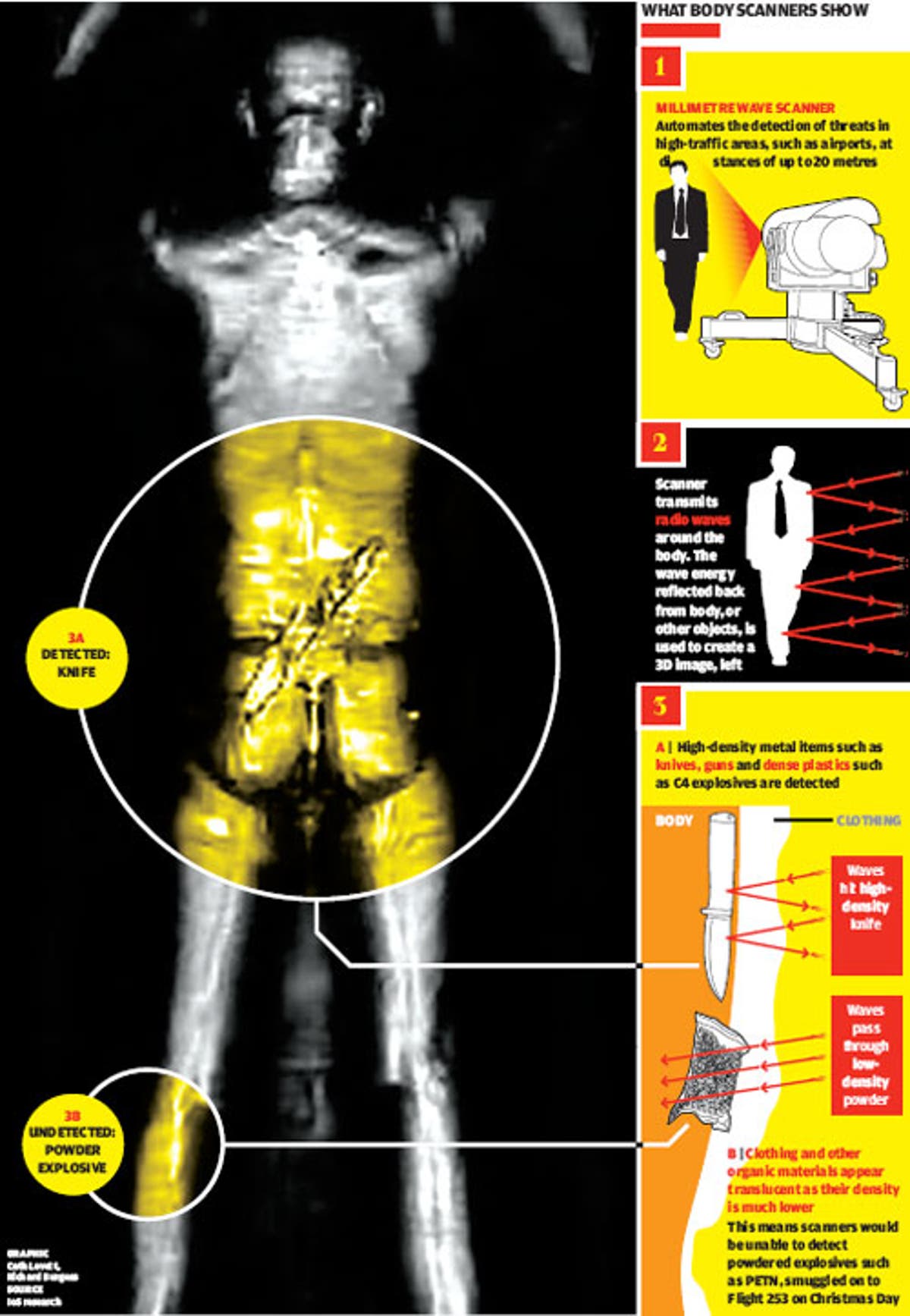Unraveling the Potential: What Can Millimeter Wave Scanners Detect?
Introduction
Millimeter wave scanners have been in the spotlight as a promising technology in various industries, particularly in security and surveillance. They offer an exquisite blend of high resolution, non-invasive detection capabilities, and swift operation, presenting endless opportunities for exploiting its potentials. In this article, we delve into what these scanners are, how they work, what they can detect, their practical use, future possibilities, and limitations. Frequent questions relating to the technology are also covered.
What are Millimeter Wave Scanners?
In the technological landscape, millimeter wave scanners are advanced devices that wield millimeter wave technology to generate detailed images through the reflection process. Here are some key elements broken down to better understand this technology:
- Origin: This technology is fairly novel, offering a futuristic approach in various realms such as security systems, telecommunications, and wireless data transmission.
- Principle: The scanners work by projecting radio waves that are able to permeate clothing and a host of organic materials, thereby facilitating the detection of concealed objects without requiring physical search methods.
- Versatility: The wide-ranging potential of millimeter wave scanners is notable, with its application spanning numerous industries. Their value as security tools, in particular, has brought them recognition and high preference.
- Detection: The unique ability of these scanners to identify hidden objects under clothing without invasive search methods defines the advanced level of this technology, making it significant in the technological space.
How Do Millimeter Wave Scanners Work?
The mechanism of millimeter wave scanners revolves around the use of low energy millimeter waves or radio waves. As per the following steps, the process provides a detailed, holistic image of the scanned object:
1. Emission of Waves: The scanner firstly emits these waves towards the object or person to be scanned.

2. Reflective Action: The transmitted waves have the ability to penetrate clothing and reflect off skin and other objects.
3. Collection of Waves: The reflected waves are gathered by the scanner's antennas for further processing.
4. Processing of Waves: The collected waves move down a guide into the scanner's receiver for processing.
5. Construction of Image: The processed data is utilized to construct an image, which illustrates precise information about the object — including its shape, size, and materials involved.
Apart from the standard operation, millimeter wave scanners can function in two types:
- Passive Scanners: They identify the natural emissions of millimeter wave lengths from the person or hidden objects.
- Active Scanners: They initiate the transmission of millimeter waves towards the body or object to be scanned and decode the reflected waves to construct the image.
What Can Millimeter Wave Scanners Detect?
Equipped with comprehensive detection abilities, millimeter wave scanners can identify a broad array of concealed objects. Facilitating the detection of both non-metallic and metallic items, their versatility makes them a beneficial asset in multiple fields. Let's have a look at the precise detection capabilities of these groundbreaking scanners:
- Non-Metallic Item Detection: Millimeter wave scanners can easily identify non-metallic objects that usually go undetected by traditional security systems. Some items in this category include:
- Ceramics: Useful in detecting ceramic knives or other harmful objects made from ceramic materials.

- Plastics: From plastic weapons to a small piece of plastic hidden within clothes, these scanners accurately identify them.
- Explosives: Uniquely, they can even detect explosives made of non-metallic compounds, proving vital for maintaining safety and security.
- Drugs: Hidden quantities of drugs, even if concealed cleverly, can be detected.
- Paper: Concealed tickets, notes, or any such items can also be caught on the scanner.
- Metal-Based Item Detection: Millimeter wave scanners are proficient in detecting metal-based items, which generally include guns and knives concealed under clothing.
- Thicker Material Penetration: A feature that sets millimeter wave scanners apart from conventional scanning devices is their ability to penetrate thicker materials such as walls or containers. This enables it to discover objects that are hidden within these materials.
- Body Cavity Detection: Millimeter wave scanners have the potential to detect items concealed within body cavities. Because of this capability, they are increasingly being utilized in various sectors ranging from security checks to medical diagnostics.
With such remarkable detection abilities, millimeter wave scanners are revolutionizing the way we are maintaining security and carrying out diagnostics. Despite notable detection capabilities, it's important to consider that these scanners have limitations as well, such as less effectiveness in penetrating metal or water. However, the overall versatility and precision they offer delineate their vital role in ensuring safety and security.
The Practical Applications of Millimeter Wave Scanners
Millimeter wave scanners have inherent versatility which allows them to be used across an array of sectors. Their unique ability to detect objects, both metallic and non-metallic under clothing, has paved the way for major applications. These applications range from security checkpoints to 5G network implementation and medical diagnostics. Let's delve into a detailed examination:
1. Security and Defense Sector:
- Airports: Millimeter wave scanners are commonly seen in airport security checks where they help identify any hidden objects that a passenger may attempt to smuggle. They provide high-resolution images, thereby improving the security protocols.
- Military and Prisons: From militaries worldwide to prisons, many high-security establishments trust this technology to maintain law and order.
2. Telecommunication Industry:
- 5G Networks: With their high-frequency and high-speed data transmission capabilities, millimeter wave scanners are integral to the efficient functioning of 5G networks. This technology makes high data rates feasible, allowing for faster downloads and real-time streaming.
3. Healthcare Industry:
- Medical Diagnostics: Leveraging the non-invasive nature of millimeter wave scanners, the healthcare industry uses them for body scanning and diagnostic purposes. They provide detailed, high-resolution images that aid in accurate diagnoses while ensuring patient comfort and safety.
Through these applications, it becomes clear that millimeter wave scanners are not just a scientific marvel; they're a practical tool with wide-ranging implications. As we continue to explore this technology's full potential, we can expect it to unlock further applications that transform various aspects of our everyday lives.
The Future and Limitations of Millimeter Wave Scanners
* Future Prospects
The prospects for millimeter wave scanners in the future look promising:
1. Accessibility: The development of more affordable and compact versions could lead to broader usage in public spaces for heightened security.
2. Technological Improvements: With continuous technological progression, we can anticipate advancements in their resolution capabilities, increasing their effectiveness.
* Key Statistics
The millimeter wave technology market, driven in part by the uptake of millimeter wave scanners, is anticipated to reach $3.4 billion by 2025, growing at a CAGR of 25.34% between 2020-2025 according to a report by MarketsandMarkets.
* Limitations
Despite the promising future, there are several hurdles millimeter wave scanners need to overcome:
1. High Expenses: Currently, manufacturing, acquiring, and running these devices requires substantial investment.
2. High Power Consumption: In most versions, these devices consume a significant amount of power.
3. Privacy Concerns: Although these scanners are non-invasive, concerns about the level of detail in the images produced raises privacy issues.
4. Material Penetration: Scanners are currently less effective at penetrating metallic objects or water. This limitation reduces their overall detection functionality in select scenarios.
In conclusion, while there are certainly limitations to millimeter wave scanners, their impressive detection capabilities, coupled with their growing usage in a number of sectors, suggest that they have an integral part to play in our security infrastructure. With ongoing research and advancements, we may soon see a world where these scanners overcome their limitations and become even more commonplace and effective.
Conclusion
Millimeter wave scanners showcase a promising future in different sectors, driven by their ability to detect a wide spectrum of objects and materials. While they have limitations and challenges, continuous research and technological advancement could further refine their potential and utility and make them an indispensable part of our security infrastructure.
Related FAQs about what can millimeter wave scanners detect
What are the pros and cons of millimeter wave scanners?
Millimeter wave scanners offer numerous pros such as high detailed imaging, non-invasive detection, and versatility in identifying both metallic and non-metallic items. However, they also have cons such as high manufacturing and operational costs, substantial power consumption, and potential privacy concerns due to the detailed images they create.
How do millimeter wave scanners enhance security measures at airports?
Millimeter wave scanners significantly enhance airport security through their advanced detection capabilities. They can effectively identify concealed objects (metallic or non-metallic) under clothing, providing high-resolution images that boost the security protocols for identifying potential threats.
What potential do millimeter wave scanners hold for future detection technology?
With their advanced detection capabilities and high-resolution imaging, millimeter wave scanners are set to revolutionize future detection technology. Their potential applications extend from security checkpoints to medical diagnostics, foreseeing a future where precise, non-invasive scanning is commonplace.


